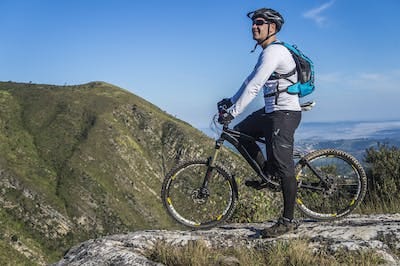Gravel biking is quite an adventurous and exciting discipline within the cycling community, and has gained considerable popularity over the last decade or so. As Steven Rindner highlights, gravel biking generally involves riding on unpaved or gravel trails and roads, and tends to combine elements of mountain biking and road cycling to provide unique and versatile experiences to the cyclists. It allows cyclists to explore a variety of less-travelled routes and soak in the serenity of nature, while also testing their bike-handling capabilities.
Steven Rindner Sheds Light on How to get started with gravel biking
The best way to start with gravel biking is simply to step out of home and start exploring. Gravel adventure begins where the tarmac ends. One can just take the trails that they normally skip on a road bike, and see where they end up. While it can be a dead-end forest path, there is also a chance that such a trail leads to a true gravel paradise. Starting any new journey, including that of gravel biking, can be very difficult. Hence, one should take it slow, and not try to cover long distances on their gravel bike at once or take on extreme gravel adventures. Rather, the initial focus should be on discovery and enjoyment. Newbie gravel riders must enjoy the thrill of the rides, instead of stressing too much about average speed or distance.
One of the most appealing aspects of off-road gravel adventures is the sheer amount of options gravel riders have. They can explore a wide variety of surfaces on a gravel bike, starting from single track to rough country roads and gravel paths. For the first gravel rides, it is better to opt for lighter gravel trails. This will allow cyclists to enjoy the fun of riding amidst natural beauty without having to tackle the most extreme trails right away. Cyclists need to give themselves enough time to get used to riding on new and different terrains.
When planning to go on a gravel bike ride, one should ensure that they take enough food and water with them. It would also be a good idea to bring a repair kid. The odds of having a puncture while gravel biking is relatively higher than when cycling on asphalt. Hence, it is better to carry the things needed to fix a flat tire on a gravel ride. This would include an inner tube, tire levers, a multi-tool and a pump. If a cyclist is used to clipless pedals, then they should consider opting for mountain bike shoes and pedals. Such pedals allow the cyclists to transfer more power.
As Steven Rindner says, cyclists trying out gravel biking for the very first time must do their research and choose the right tires for their bicycle. Wider tires can ideally provide more grip and more comfort, as well as have the capacity to handle lower pressures, providing cyclists with a better grip on loose surfaces. The weather and route also have a major impact on the choice of tires. For instance, wider tires with more tread are good for wet weather conditions on rough gravel paths. On the other hand, in dry conditions, it is better to opt for thinner tires with less tread.








